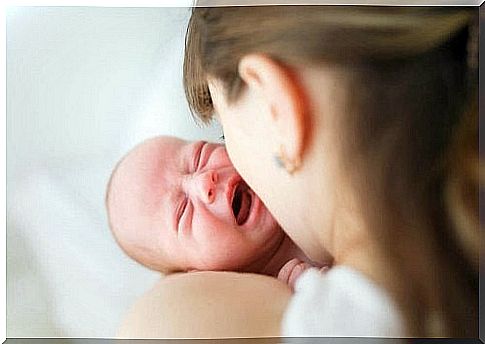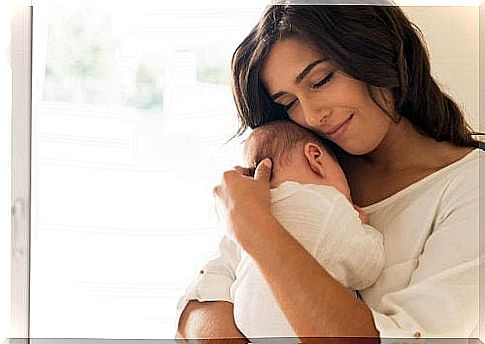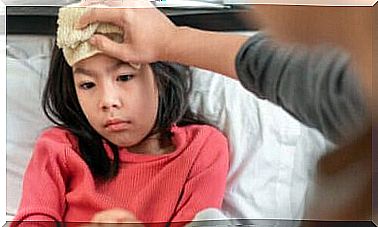Shaken Baby Syndrome: Causes And Symptoms

Shaken baby syndrome refers to a head injury caused by child abuse, the main cause of which is violent shaking of the baby. Shaken baby syndrome affects babies a few months old the most, but it can also occur in young children up to 3-4 years old.
Vigorous shaking of the baby causes damage to the brain cells that prevents the baby’s brain from getting enough oxygen. As a result, the syndrome of a shaken baby can lead to internal bleeding and bruising, or even incurable brain damage or, in the worst case, death.
The symptoms of shaken baby syndrome vary depending on the area of the brain affected by the injury, but it often results in fragmented damage to the neuronal exporting branch. In some cases, the symptoms become apparent within a short period of time, but sometimes the syndrome can also have long-term consequences.
Why does shaken baby syndrome develop and how can it be prevented? For many, this syndrome is still an unknown condition and that is why we want to list below its main causes, warning signs and a few recommendations to reduce the risk of the syndrome.
Causes of shaken baby syndrome

The main cause of shaken baby syndrome is violent shaking of the baby, which causes injury to the baby’s brain. Sudden movement in babies’ sensitive brains can cause inflammation, bleeding, and bruising. These in turn can lead to more serious injuries, which in the worst case are fatal.
The syndrome often occurs when one of the parents or baby caregivers shakes the baby vigorously to stop the crying. This harsh reaction can be both an unintentional accident and a deliberate and planned movement.
Risk factors
- Unrealistic goals and expectations for the baby and baby care
- Young parents or single parent
- Constantly stressful situations and circumstances
- Domestic violence
- Consumption and abuse of alcohol and other drugs
- Unstable family relationships
- Anxiety and depression
Symptoms of shaken baby syndrome

Shaken baby syndrome usually does not cause physical and visible injury to the baby’s body, as only in some cases does the baby get bruises on his face. The consequences of the syndrome are not always immediate and sequelae may develop gradually depending on the injured area of the brain.
The most common signs and symptoms of shaken baby syndrome include:
- Extreme irritability of the baby
- Stiffness and stiffness of the baby’s body
- Pale or bluish skin
- Convulsions
- Paralysis
- Breathing difficulties
- Baby having difficulty staying awake
- Decreased appetite
- Dilated pupils
- Broken blood vessels in the eyes
- Low muscle tone of the baby
- Vomiting and anorexia
In mild shaking baby syndrome, warning signs are usually not even visible. However, at a later stage, the child may experience problems with both physical and mental health and behavior.
Complications
A strong shaking of the baby, then lasting only a short time, can lead to irreversible brain damage. Also in many cases of assault, the same syndrome has resulted in the death of the infant or young child. Children who have survived the syndrome always require medical attention to avoid the following complications:
- Vision problems or blindness
- Deterioration of mental health
- Learning and behavioral problems
- Physical or mental injuries
- Convulsions and tremors
- Apoplexy
Prevention of shaken baby syndrome

One of the most common ways to prevent shaken baby syndrome is to take a parenting course, especially for a first-time couple. These types of courses and therapies help you understand why your baby shouldn’t be shaken and how your baby’s crying can be handled properly.
Many parents shake their baby because they don’t know why the baby is crying and how to get it under control. In addition, some parents are completely unaware of how serious the consequences of shaking a baby can be.
Mental health professionals can also be asked for help. For example, a psychologist or psychiatrist can teach strategies to help curb and control the negative emotions and constant stress brought on by parenthood.
Tips for controlling and stopping baby crying
- Make sure your baby is hungry and breastfeed whenever needed.
- Make sure your baby is cold or hot; cool the baby in hot and warm in the cold.
- Check the baby’s diaper and always change it as needed.
- Measure your baby’s temperature in case of a fever and check if your baby has any other symptoms.
- Feed your baby slowly and always belch after eating.
- Soothe or rock the child in your lap or cradle.
- Walk the baby in the stroller.
If none of the above work, stay calm and take a deep breath. In these cases, it is best to put the baby back in their own crib or playpen and simply let the baby cry out. This is also a good time to ask for support from a family member or friend. If your baby just keeps crying, see a pediatrician, as endless crying can be a sign of illness.
Finally
Shaken baby syndrome is the result of violent shaking of the baby, for example in frustration or anger, when the baby does not stop crying. Even if this syndrome does not always show immediate signs of danger, it can cause serious health problems for a child’s brain in both the short and long term.









